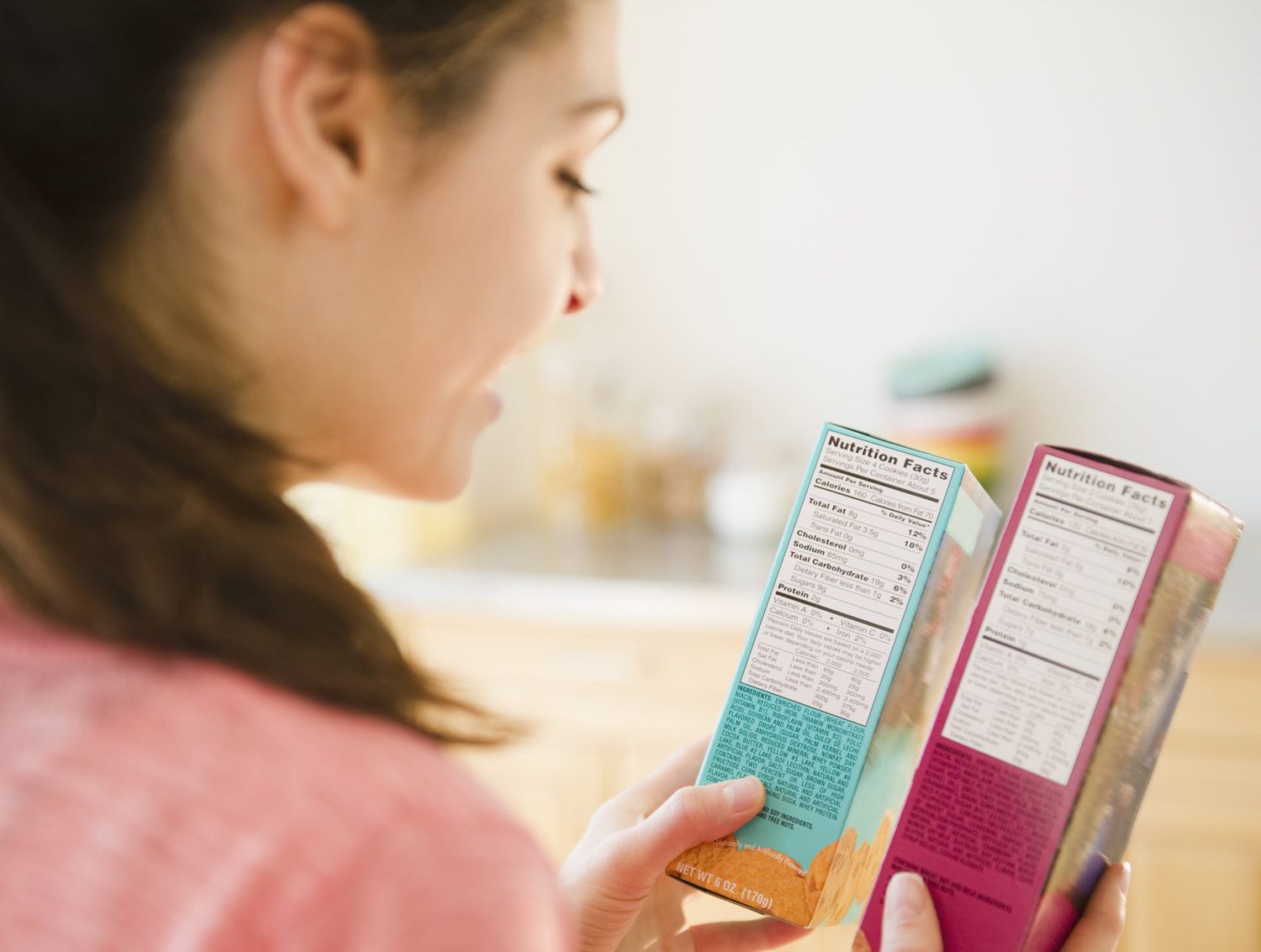
For many of us, a year spent eating at home has altered our diets; some for the better (cooking at home means less greasy takeout) and some for the worse (how many slices of banana bread in one day is too many)?
What started with just a little extra sugar—sweetening your typically black coffee with a tiny teaspoon—quickly snowballed into shattering your no-dessert-on-weekdays rule. Now you're baking cakes to celebrate literally any celebration or victory: your dog's birthday, perhaps, or figuring out how to login to your child's remote school platform.
But while sugar is fine in moderation, there's good reason to keep an eye on your intake of "added sugar" especially. On nutrition labels, it connotes the type that's added to foods during the production process, as opposed to naturally-occurring sugars like the ones in fruit and some vegetables (fructose) or milk (lactose).
"It's not that little bits of added sugar are bad for anyone, [and] we're not talking about when it's your birthday, and you eat a lot of added sugar on one day," says Colleen Webb, a registered dietitian and nutritionist who specializes in digestive health. "It's eating sugar in excess that's bad. Your tolerance increases, and you want more to stay satisfied."
A diet filled with loads of added sugar is linked to chronic, low-grade inflammation, an increased risk of type-2 diabetes, non-alcoholic fatty liver, heart disease, dental problems, and possibly obesity-related cancers.
Plus, sugar can be detrimental to your gut health. "Too much added sugar can disrupt the balance of the gut microbiota, might actually weaken the gut barrier, and negatively influence metabolism," Webb says. (Why that matters: The gastrointestinal tract is a crucial part of the body's immunological defense system, and a strong gut barrier keeps antigens from entering the body, which can trigger an immune response. It's important to keep the barrier strong.)

Webb also notes that it's not just added sugar itself that leads to health problems – it's also what high-sugar foods often mean for your overall diet: "When we think about the foods with added sugars, they tend [to be] full of highly processed food items that are also really low in dietary fiber."
Meaning, if your diet is full of lean protein, veggie-packed salads, and whole grains, you're usually not also eating an exorbitant amount of sugar. But if your diet is high in added sugar, it's probably also high in the low-fiber, processed foods that can lead to health problems, including cardiovascular disease and high cholesterol.
The good news is, you can make simple changes to decrease your added sugar intake. Below, Webb shares her best patient-tested tips for cutting back on sugar without feeling deprived.
Identify How Much Sugar You're Eating
The World Health Organization recommends keeping added sugar to less than 5 percent of your daily calories, or 25 grams of added sugar for a 2,000 calorie diet. Webb's first task with new patients is to determine how much sugar they're actually consuming. Patients keep a record of their diets for a few days, and she asks them to read the nutrition labels of the foods they're eating and tally the grams of sugar. Sometimes the number is an unwelcome surprise.
"It's incredible how much added sugar people are eating without even realizing it — upwards of 100 grams of added sugar per day," Webb says of some of her patients. (The average American now consumes about 80 grams of added sugar a day.)
It's much easier to start cutting back when you have a general idea of how much sugar you're actually eating, and what foods it comes from. To make it even easier, labels recently started listing added sugar, instead of grouping the food's total grams of sugar together.
(And while you should be on the lookout for added sugar specifically, don't forget that some foods and drinks are naturally high in sugar. Webb suggests being mindful of portion sizes for foods like dried fruit, and diluting fruit juice with a little water, as the sugar adds up fast.)

Watch Out for Sneaky Sugar
Sure, soda, candy, and cookies are all the known sugary confection culprits, but added sugar can be found in places you might not expect. Make sure to check the labels of your favorite flavored coffee drinks, sports drinks, cereal, salad dressing, tomato sauce, yogurt, and kaffir. Webb notes, "People are often surprised to see how much sugar kaffir has, even the organic varieties—sometimes your whole day's worth of added sugar in one serving size."
Also remember that no matter how virtuous it might sound, "organic sugar" is still sugar. In fact, there are more than 61 different names for added sugar in food labels, including honey, agave nectar, barley malt, and corn sweetener. "Anything listed as 'syrup' is a giveaway," she says. Fad diet "health" foods and drinks are also suspect. Protein bars, even those marketed to kids, can contain half of your daily sugar allotment.
Make a habit of checking out the nutrition labels. The dietitian was shocked to learn how much sugar was in the barbecue sauce she was using for a favorite recipe. "It had eight grams of added sugar for just a couple tablespoons," she says. "And I was using a jar." Armed with her new knowledge, Webb comparison shopped to find another sauce with less sugar, and she still enjoys the recipe.

Curb Sugar Cravings
To curb sugar cravings, Webb first advises patients to cut out artificial sweeteners. Since they're so sweet, sugar substitutes like saccharin, aspartame, and sucralose can actually intensify a sugar craving, making normally sweet foods, like fruit, seem not sweet enough by comparison.
"It's really just a matter of retraining the taste buds," she says, admitting it's a little easier said than done. "But our taste buds will evolve to like what we give them to eat. That's just part of survival."
When she meets patients who are consuming more than 100 grams of sugar each day, Webb doesn't recommend cutting out sugar cold turkey; in fact, she says eschewing all added sugar is unnecessary and unsustainable. Instead, she recommends identifying some of the major sources of sugars in your diet—like sugary drinks or energy bars—and then choose areas where it might be easiest to modify.
Webb also notes that the most addictive foods are usually the more highly processed ones, so in order to make a dent in your sugar consumption, try forgoing store-bought treats like packaged cakes and pies, and sleeves of Oreos (just us?) in favor of baking your own cookies.
"Just buying or making something that's more minimally processed, or unprocessed, can really help," Webb says, noting that most recipes call for way more sugar than needed, so you likely won't notice a huge difference if you take out 25 to 50 percent. And you're less likely to eat mindlessly if you put effort (not to mention, measured the sugar yourself) into something delicious.

Add Foods that Taste Sweet (But are Low in Sugar)
"Don't let anyone tell you not to eat fruit," says Webb, pointing out that some fad diets restrict it. Eating an orange or bowl of grapes can satisfy a sweet tooth, as can a baked sweet potato, dark chocolate, or yogurt (sans added sugar).
Webb also suggests sprinkling cinnamon in your coffee instead of sugar or artificial sweetener.
When you do eat sugar, try pairing it with a macronutrient like a protein or fat to provide key nutrients and fill you up. Mixing in a little honey or maple syrup to peanut butter or yogurt can be helpful while trying to wean off of candies, cakes, and pastries — giving your sweet tooth a nod while retraining your taste buds in the long run.
Source: Read Full Article
